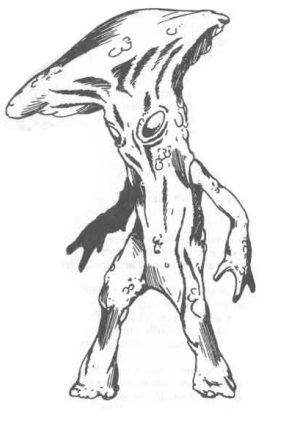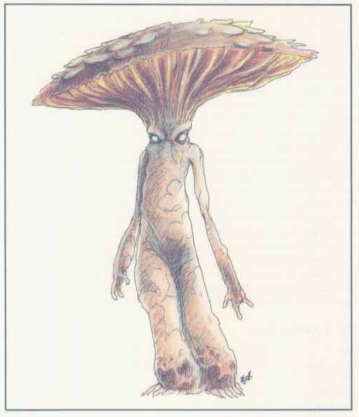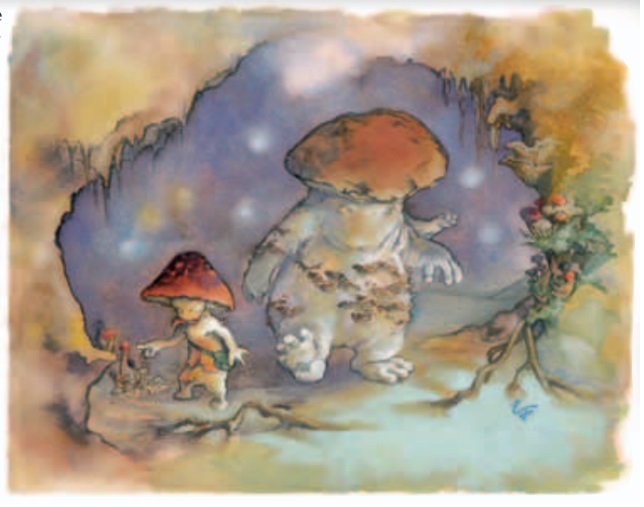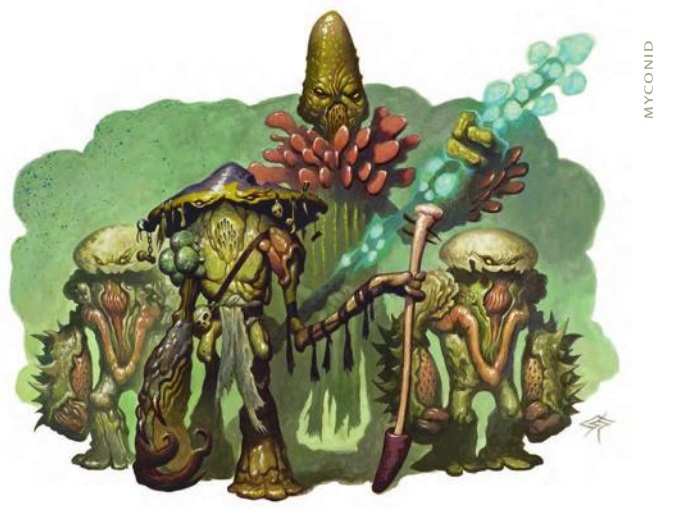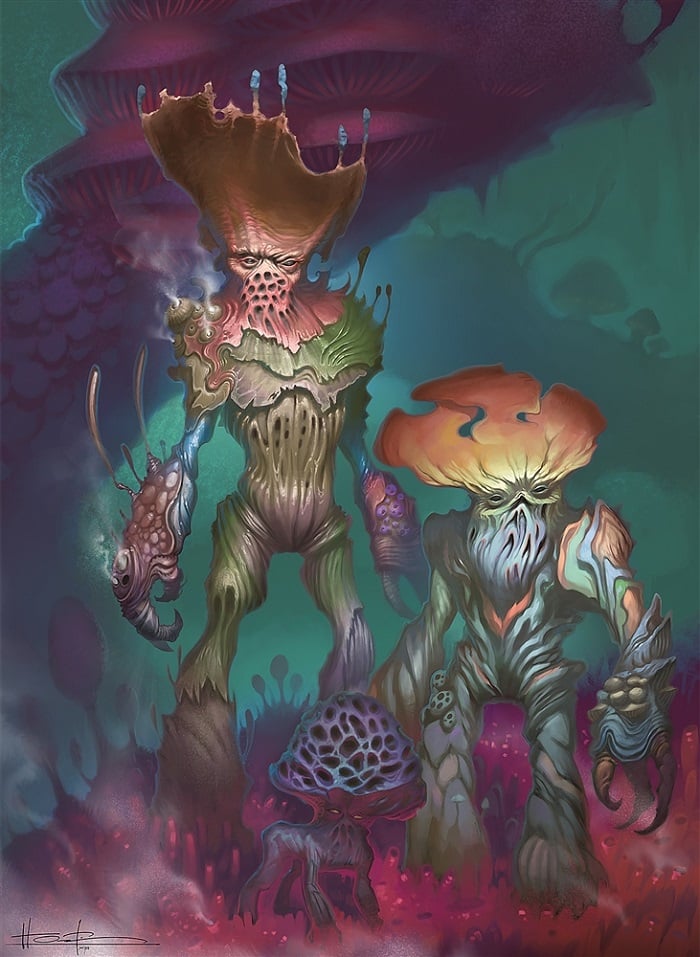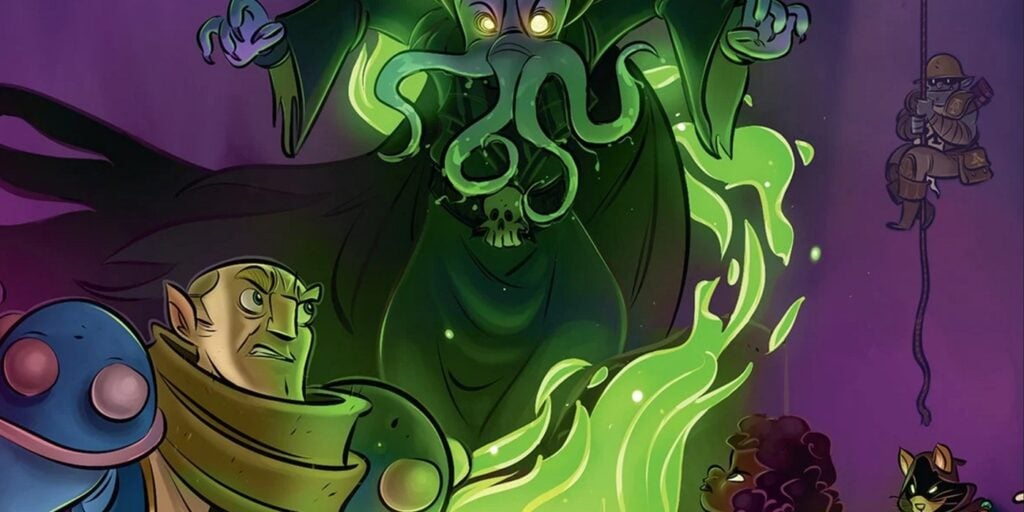D&D Monster Spotlight: Myconids, the Fungus Among Us
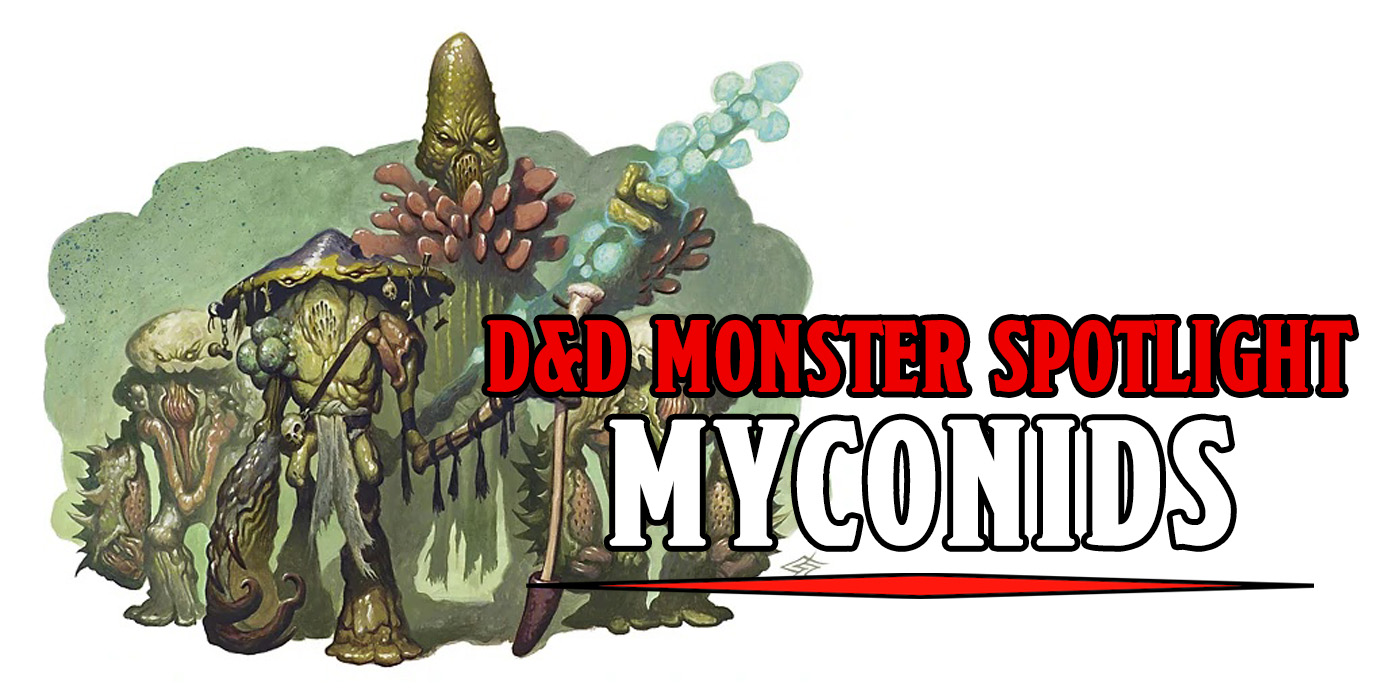
Last Of Us is about to make us all afraid of fungi, but the D&D version can be surprisingly personable and cool.
If you tuned in for the premiere of Last of Us yesterday (or played the game) you know that we’ll be looking at a lot of fungi zombies this season. The first episode was about as anxiety-inducing as one may expect, but there’s a lot of cool world-building and setup so far. But this series introduces something a fun spin on the zombie genre that we don’t normally see with the concept of The Clickers. Basically, they’re fungus zombies, and the show isn’t shy about telling you that they’re (loosely) based on real-world fungi. But what if we want to add these creatures to our next D&D adventure? Well, you sort of can with the Myconids.
Myconids are the sort of monster that starts out interesting in First Edition and stay interesting forever. If you’re looking for a terrifying monster, your DM will have to work a little DM magic on these guys because they’re a delightful fungus commune society that would rather farm their non-sentient fungus than deal with any of your human wars. But that doesn’t mean that they can’t hold their own, or that they can’t be scary.
First Edition
At their inception, Myconids were vaguely human-like. Their size ranges from small to large, their alignment is generally Lawful Neutral, and their days are broken up into 8 chunks for rest, farming, work, and melding. Melding is a social-slash-psychic way to interact with their community for entertainment, communication, and pleasure. Think of it as a controlled group hallucination, but mentally beneficial. As fungus people, they can (and do) spray a variety of different spores at enemies or allies alike.
Each spore acts differently and has different effects on those they touch. For example, distress spores alert other Myconids to danger and ask for help. On the other hand, rapport spores help with melding and communication both with Myconids and other species. Myconids don’t speak so rapport spores would be helpful in knowing if they want to offer your party a place to rest or to hit you with their poisonous skin ooze.
There are also reproducer spores for growing new Myconids, pacifier spores for rendering an enemy effectively paralyzed, hallucinator spores for causing your enemy to hallucinate, and animator spores to reanimate a dead creature. Only the Myconid king may achieve the level required to use animator spores.
Second Edition
Everything regarding what Myconids look like, their attacks, and their spores stayed almost identical from 1E. However, 2E expands on their society quite a bit. The Myconid king is the largest and most powerful fungus man in the cave. Once the king dies, the duty falls to the next largest. Leadership isn’t something any Myconid wants, seeing it as lonely and unpleasant to stay outside of the social circle in order to remain objective in the duties of leadership.
The king also practices something called “fungal alchemy,” which I would like to know everything about. Interestingly, despite being not dissimilar in many ways, humanoids and Myconids don’t get along very well. Myconids view humanoids as violent and only interested in conquering more territory, while humanoid creatures see Myconids as disgusting and generally threatening.
Third Edition
Third edition breaks down the societal structures of the Myconids even further. Now, instead of Myconid and Myconid king, there are Junior Workers, Average Workers, Elder workers, Guards, Circle Leaders, and Sovereigns. While I know this is supposed to give more realism to their communities and describe what kind of fungus a player can expect to run into, the rigid groups based on age, strength, and skills relative to one another remind me of a corporation. Do you want to fight some middle-management mushrooms, or would you prefer just one CEO mushroom? Or will you be climbing the fungus latter your entire life?
Fourth Edition
Goodbye to most of those 3E Myconid designations, hello Myconid Rotpriest. Fourth edition keeps the guard and sovereign in play and introduces the Rotpriest, a healer-slash-tank. Their job is “taking the damage of others so that the colony as a whole can survive”. This is probably for the best as the Sovereign’s main tactic is commanding from behind and relying on other Myconids for protection, while the Guards charge into battle and try to use pacification spores to subdue enemies.
4E Myconids are also less interested in avoiding conflict than their predecessors. Now they look to expand their territory and compete for resources. This change is especially interesting because previous editions pointed this exact mentality out as something that older versions of the Myconids had disdain for and judged in humanoids.
Fifth Edition
The most recent incarnation of the Myconids are peaceful once more. They are willing to help the average traveler with shelter and safe passage if approached peacefully, spore carefully when producing young so as to avoid overpopulation, and believe that melding with their community is the reason for their existence. Are they a little like a cartoonish depiction of a cult? Yes. But a mostly harmless and probably pretty helpful one.
Have you encountered a Myconid? How did your party respond to rapport spores? Did you have to fight them? Let us know in the comments.
Happy Adventuring!

